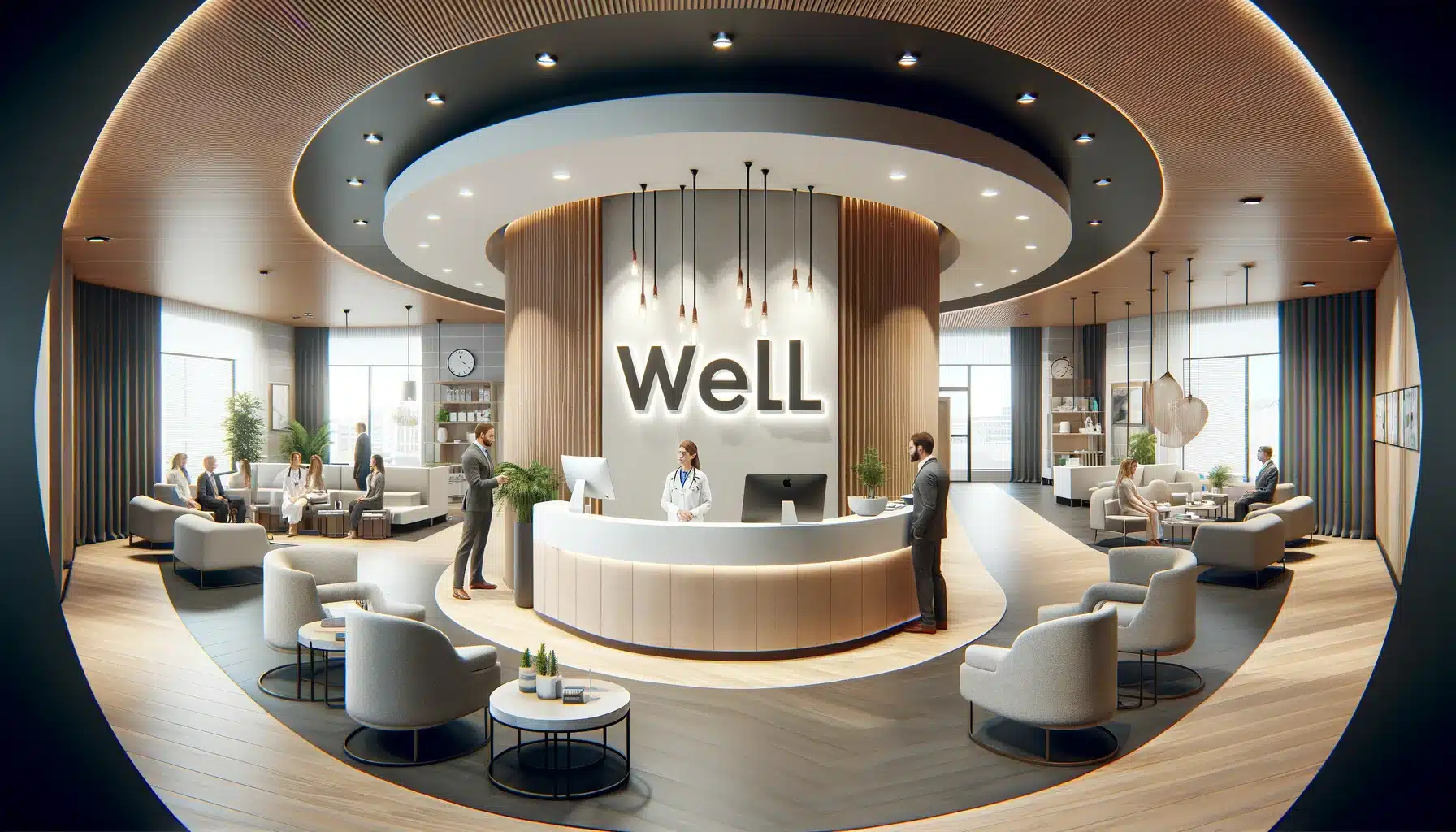

When we last talked to Hamed Shahbazi he had a lot of plans.
First and foremost was establishing his new company, WELL Health Technologies (WELL Health Technologies Stock Quote, Chart, News, Analysts Financials TSX:WELL) as a real player in the Canadian tech landscape. Next was making sure his superstar investor, Sir Li Ka-shing was happy about taking such a large stake in the venture. Then there was the small task of helping to professionalize and upgrade a Canadian healthcare system that was in obvious need of such things.
In 2020, Shahbazi went three-for-three. WELL was one of the top performers on the entire Toronto Stock Exchange, which it had graduated to with unrivaled dispatch. Mr. Ka-shing’s abundant fortunes became more abundant with his WELL Health investment. And, perhaps, most impressive of all, Shahbazi’s company spawned nothing less than an entire digital health sector in Canada, with “me toos” and look-a-likes populating various exchanges and pouring hundreds of millions of dollars into Canadian digital healthcare.
If you did not know Shahbazi, you might expect him to be resting on his laurels and basking in the success of his third major tech venture (TIO Networks and BBTV preceded WELL. The former was sold to PayPal, the latter IPO’d late last year). But no one who has ever met him in person would expect that of Hamed Shahbazi.
So what does WELL Health have planned for 2021? Big things, as you might imagine.
Hamed, 2020 was an incredible year for WELL Health shareholders. What was it like for you?
2020 was a year unlike any other. Clearly, it was a challenging year as a result of the COVID-19 pandemic, but it was an opportunity for us to contribute to a substantial cause and crisis and we’re very pleased with our efforts to support patients and providers. I’ve always believed that value creation should only occur in a business through adding value and being relevant to one’s customers. I believe the multi-year acceleration of healthcare towards digital has allowed us to be extremely valuable at a time when the industry was ill-prepared to take on the strains of physical distancing. Our digital tools were used by hundreds of providers and supported hundreds of thousands of patients. We feel very blessed that we were able to provide valuable tools to healthcare workers so they could continue to provide care to their patients.
How has WELL filled in the value on the stock?
WELL is a unique company as our strategy from day one was to not only invest in technology but also patient services assets. We felt that most software and technology providers are too far from the provider/patient interaction, which is where “the rubber meets the road”. We believe by being a technology service provider AND an omni-channel healthcare company delivering patient services in a variety of channels, settings, medical disciplines and categories positions us very well to accomplish our vision of creating continuity and improved interoperability in healthcare. We started out with acquiring, owning, and operating medical clinics, but we quickly expanded out to a whole host of digital technologies from Electronic Medical Records (EMR), to telehealth, to cybersecurity and billing solutions for medical clinics. We now have six distinct business units, each growing organically and inorganically. The Company has also become international as we now have a significant growth business in the United States and we also operate in five additional countries.
Growth through acquisition is WELL’s modus operandi. How many acquisitions have you made in the past year and how many more are you looking at?
In total, we completed 14 acquisitions and 2 minority investments in 2020. We have a very large pipeline with several hundred potential acquisition and investment opportunities – consisting of both clinical and digital assets. At any time, we generally have anywhere between six to twelve signed Letters of Intent (LOI) with new acquisition target companies. Our shareholders should rest assured that WELL’s management will continue to take a highly disciplined approach to due diligence, evaluating and executing on capital allocation opportunities.

Okay, tough question number one. If WELL believes the future is digital, why are you still interested in buying physical clinics?
We believe the future of healthcare will be based on an omni-channel experience which means that when you speak to a healthcare provider online and they direct you to a clinic for closer evaluation, all the data, notes and information is carefully recorded and passed on to the next practitioner that you see. You do not have to explain yourself again between virtual and in-person clinic visits. Think of this as a hybrid model of longitudinal care. Telehealth will play a critical and ongoing role in the provisioning of care, but of course in person care is an important and obviously unavoidable part of ensuring positive health outcomes. After the government mandated lockdown, we witnessed a significant rebound of our “in-clinic” patient visits, which shows how much we still value that physical interaction between the patient and the healthcare provider.
Primary healthcare experiences for physicians and patients are under-digitized. There has historically been an underinvestment in this area. As WELL acquires, develops, and invests in digital experiences, there is tremendous value to deploying the associated solutions into our own primary care clinic network to optimize them before we productize and scale their distribution through other WELL assets including our 2200+ EMR instances and 10,700 healthcare providers throughout Canada.
What digital health things will remain in a post COVID world? Certainly telehealth looks like it is here to stay…
As I mentioned in my last response, there is a real lack of digitization in the healthcare sector compared to other sectors in Canada. Covid accelerated the use of telehealth, but there are still a lot more opportunities for digitization. For instance, you can book a dinner reservation on your phone, but most people in Canada can’t book a doctor’s appointment from their phone. We see additional digitization opportunities in waiting room automation, clinical workflow, back office billing and cybersecurity services.
You have made so many OSCAR-related moves. For the uninitiated what is OSCAR and what is your endgame with it?
OSCAR is an acronym for “Open Source Clinical Application Resource”, which is an open-source Electronic Medical Records (EMR) system originally developed by McMaster University’s Department of Family Medicine to inspire collaboration between the wide spectrum of health professionals. Over the past two years we have acquired nine EMR service providers based on OSCAR, and in the process, we have successfully grown to become the third largest EMR provider in Canada with over 2,200 clinics and 10,700 healthcare practitioners – representing over 16% of the EMR market in Canada. Having consolidated the OSCAR service providers, we are now seeking to acquire non-OSCAR EMR service providers.
We believe that powering the healthcare provider’s EMR positions us well in terms of providing future functionality and applications to the healthcare provider. Like the relationship between iPhones and apps, we launched “apps.health” last year, which to date, is Canada’s only browsable app marketplace for integrated apps for outpatient EMR systems in Canada. The vision behind apps.health is for it to be EMR agnostic which means we’ll have apps integrated with OSCAR as well as other EMR systems participating in the program. We want to involve more healthcare participants; we want to tear down walls not build new ones up!
Tough question number two. WELL has spawned a host of imitators. It could be argued that you pioneered an entire sector. Doesn’t this crowd make acquisitions much harder and more expensive?
Thanks for this question, we’re actually very proud that we’ve spawned the kind of interest you’ve described. Having more private and public capital flow into healthcare and healthcare technology is exactly what we needed in Canada. While we are absolutely blessed to have the kind of government support we have in Canada, we are excited that the private sector is now getting involved in a manner that doesn’t change the structure of our industry but helps us enhance and preserve our present system. We’ve always said we don’t see ourselves as “disrupters”, we see ourselves as “organizers” and “capital allocators”. Regarding our access to assets for acquisition, the healthcare market is an enormous industry, and we continue to see many quality clinical and digital acquisition opportunities. In Q4 we completed seven acquisitions, so our pace of acquisitions has not slowed down. Furthermore, we have maintained our disciplined capital allocation strategy and we are very careful not to overpay.
Is there still a “monster” acquisition out there to be had?
We like doing small acquisitions as they typically have lower multiples; however, occasionally we do see a larger mispriced asset which is when we really spring into action. If/when we find these opportunities, we will act fast.
What are your goals regarding organic growth?
We are witnessing organic growth across all business units in our Company; at varying degrees as each business unit is different in terms of maturity, size and scale. Telehealth has basically gone from less than 1% adoption pre-pandemic, to over 50% of our total patient visits are now done through some form of virtual or telephone consultation. That’s tremendous growth in a very short period of time. In addition, we have been hiring new doctors and other allied health practitioners contributing to organic growth in both the clinical and telehealth sides of our business. Our EMR business, billing automation and cybersecurity business units are likewise experiencing very healthy organic growth.
What are your goals for 2021?
We are really looking forward to 2021. We are expecting both organic and inorganic growth this year. We are currently sitting on approximately $80M in cash which we hope to deploy this year in making highly accretive acquisitions. Furthermore, we turned EBITDA positive in Q4 and we expect to remain EBITDA and cash flow positive this year. As a capital allocator its important that you also generate capital, so that positive cash flows can be redirected into acquiring more assets that create even more positive cash flow. We believe we are just at the beginning of this virtuous cycle or positive “flywheel” affect. Things are about to get interesting and really compelling with the WELL Health story.
Disclosure: WELL Health is an annual sponsor of Cantech Letter. Nick Waddell and Jayson MacLean own shares of the company.
Comment
One thought on “What does WELL Health CEO Hamed Shahbazi have planned for 2021?”
Leave a Reply
You must be logged in to post a comment.





 Share
Share Tweet
Tweet Share
Share




Great stock I have 1000 shares now over a year wish I had bought more.